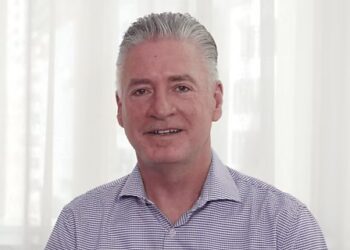Investors seeking financial advice during the uncertain market conditions of 2023 triggered a rebound in the number of self managed superannuation funds (SMSFs) used by AUSIEX clients.
Analysing a large cohort of its data, AUSIEX found new SMSF account openings were driven by advised clients as the number of self-directed investors opening SMSF accounts declined. Generation X – those likely to inherit the bulk of the intergenerational wealth transfer – were chief among the advised investors opening new SMSF accounts in an indication of their growing financial clout.
Their share of new accounts rose by more than 14% year on year while the share of new Baby Boomer accounts rose by a far more modest 2.1%. The share of new accounts opened by advisers for younger Millennials born between 1981 and 1996 rose 3.85% by comparison, though were significantly fewer in numerical terms.
In stark contrast, the number of new accounts created for self-directed SMSF investors across Generation X, Millennials and the Interwar generation all fell sharply year on year, raising the possibility some are now being serviced by advisers or via the mainstream superannuation. It’s reasonable to argue the effort and cost associated with self-administering an SMSF is being re-evaluated – particularly considering the regulatory and compliance requirements but also geopolitics, inflation and the uncertainty caused by global banking collapses (such as Silicon Valley Bank) during 2023.
From the data sampled, women are still less likely than men to hold an SMSF account overall. However, with some research such as, Boston College’s Center on Wealth and Philanthropy suggesting that women may inherit more than men from the Baby Boomer and Interwar generations from now until 2040, they present a large portion of potential clients for SMSF advisers.
There is already some evidence of greater interest from women in investing into their SMSF, with the proportion of AUSIEX holdings accounted for by female primary account owners increasing from 18.8% to 19.6% over the course of 2023.
AUSIEX data also identifies traits of female investors that can help advisers target this market. For example, women had higher average monthly holdings than men throughout 2022 and 2023, recorded larger trade sizes and traded fewer securities.
Markers of advice are evident
It should not come as a great surprise that overall trading volumes among SMSF investors were subdued as investors seemed to take refuge in quality and income generating assets to counter last year’s uncertainty. This was particularly evident in self-directed SMSFs, though trading volumes for advised SMSFs actually increased their trading volume (number of trades) by 1.4% (with actual traded value up a robust 6%).
It’s perhaps also unsurprising that a large majority of SMSFs allocated capital to financials and materials – as these two sectors alone make up more than half the market capitalisation of the S&P/ASX 200.
Notably, however, advised SMSFs appeared to have a materially different allocation to the healthcare and consumer staple sectors than their self-directed peers. This is perhaps an indication of the regular portfolio reviews by advisers which allows them to rebalance holdings to capture the changing composition of the Australian stock market over time.
Advised SMSFs also showed a preference for a broader range of securities than self-directed peers, most notably for exchange traded funds (ETFs) as advisers appeared to diversify and minimise volatility from their portfolios.
The diversity of ETFs now available is not only allowing advisers to build desired client exposures more efficiently but also gain access to international markets. This was evident in the ETF strategies employed by advised SMSF accounts in 2023 where global equity ETFs, US specific exposures and global strategy ETFs were in relatively higher usage compared with non-SMSF non-advised clients.
Beyond 2024
It’s clear the ‘DIY nest egg’ remains popular and highly relevant in Australia’s wealth management landscape, presenting a significant business opportunity to financial advisers.
Recent data prepared by the Australian Taxation Office showed there are over 610,000 SMSFs with 1.1 million members and $876 billion in assets. This represents approximately one quarter of the $3.6 trillion in superannuation wealth held by Australians as at 30 June 2023.
From AUSIEX’s vantage, the complexity of managing a diversified SMSF portfolio – and all the administration that comes with it – underscores the importance of advisers and the need for advisory practices to continually invest in technology that can underpin operational and trading efficiencies.
This will not only enable them to keep providing the strong investment discipline evident from the data above, but also increase the capacity of an advisory practice to service even more SMSF clients.
For more information about AUSIEX or to access our research visit www.ausiex.com.au.





